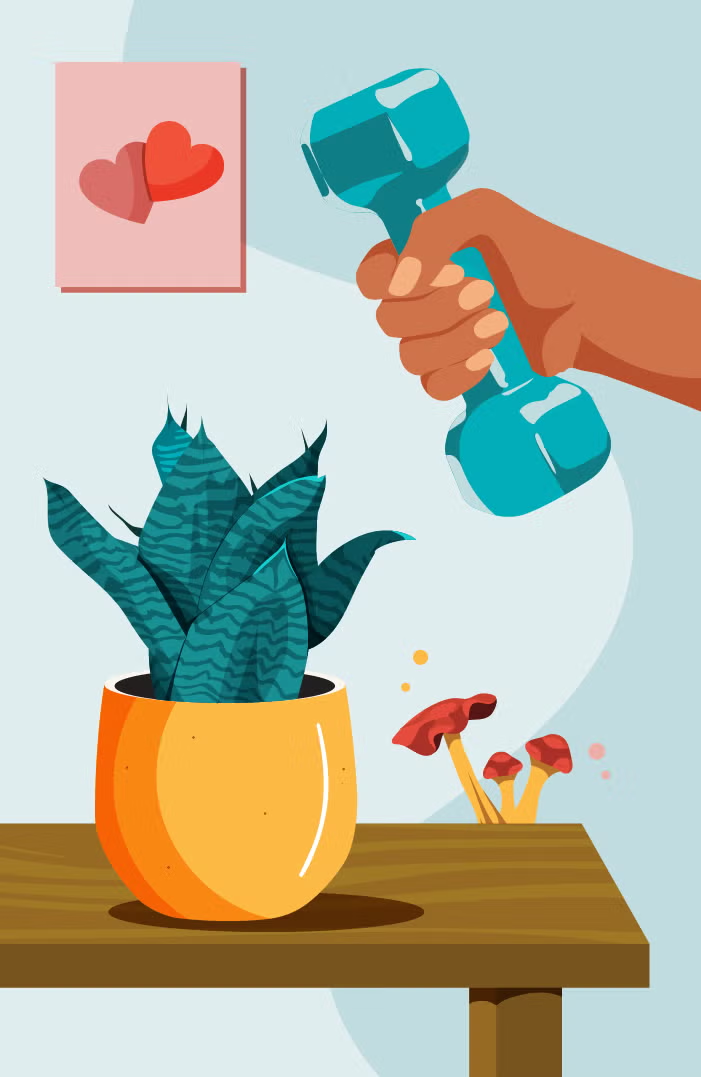At Natural Health, we believe that managing type 2 diabetes starts with knowing what to put on your plate, and what to leave off. This guide outlines what foods to avoid with diabetes and helps you make healthier swaps. From carbs to fats, we cover the essentials for better control and long-term well-being.
What foods to avoid with diabetes

Managing diabetes effectively means making smart food and drink choices. While it’s crucial to avoid items that cause rapid spikes in blood sugar, increase insulin resistance, or lead to weight gain.[1] It’s equally important to focus on food good for diabetes, those that help stabilize blood sugar and support overall health. In general, people with diabetes should stay away from foods and beverages high in added sugars, unhealthy fats, and overly processed ingredients. Below is a breakdown of what to steer clear of:
| Category | Why It’s Harmful for Diabetes |
| Foods with added sugars | Cause blood sugar spikes |
| Sugar-sweetened beverages | High glycemic load and no nutritional value |
| Foods with saturated fats | Increase insulin resistance |
| Alcohol | Disrupts blood sugar control and liver function |
| Ultra-processed foods | Often high in carbs, fat, and additives |
Foods with added sugars
Why avoid them?
Foods with added sugars are a major contributor to rapid blood sugar spikes.[2] These sugars increase the glycemic index (GI) of a meal, forcing your body to produce more insulin to manage the rise in blood glucose.[3] Over time, this can worsen insulin resistance and make diabetes harder to control.
Examples of sugary foods to limit or avoid:
- Cookies, pastries, cakes: High in sugar and fats – may spike blood sugar fast
- Flavored breakfast cereals: Often low in fiber but high in sugar
- Flavored yogurts: Can contain up to 15–20g of sugar per serving[4]
“Even foods labeled as “natural” or “healthy” can contain hidden added sugars. Always check the “Added Sugars” line on the nutrition label. The American Diabetes Association (ADA) recommends limiting added sugar to less than 10% of total daily calories.”[5]
Read also: Best snacks for diabetes: High protein, High fiber & Healthy fat
Sugar-sweetened beverages
Why avoid them?
Sugar-sweetened beverages are one of the fastest ways to spike your blood sugar levels. These drinks are absorbed quickly into the bloodstream and contain little to no fiber, protein, or fat to slow digestion.[6] This makes them especially harmful for people with diabetes.
Examples of sugar-sweetened beverages to avoid:
- Regular soda: Contains 35–40g of sugar per can [7]
- Flavored coffee drinks (e.g. lattes, frappes): Can contain 30–60g of sugar depending on size[8]
- Energy drinks: High in caffeine and sugar[9]
“Always check nutrition labels. Even drinks that appear “healthy” (like bottled teas or smoothies) can be loaded with sugar. Look for options with 0g added sugar or “unsweetened” labels.”
Foods with saturated fats
Why limit saturated fats?
People with diabetes already face a higher risk of developing heart disease. Consuming too much saturated fat can raise Low-Density Lipoprotein (LDL bad) cholesterol levels, increase inflammation, and worsen insulin resistance.[10] All of which can make diabetes harder to manage and raise the risk of cardiovascular complications.
Examples of high-saturated fat foods to limit or avoid:
- Fatty cuts of red meat (e.g. ribs, sausages): High in saturated fats and cholesterol[11]
- Butter and lard: Raise LDL cholesterol, promote insulin resistance[12]
- Full-fat dairy (whole milk, cheese, cream): High in saturated fat and often paired with sugar[13]
“Health organizations like the American Diabetes Association and the American Heart Association recommend limiting saturated fat intake to less than 10% of your daily calories — and ideally less than 7% for people with diabetes or heart risk.”[14]
Alcohol
Why be cautious with alcohol?
For people with diabetes, alcohol can have unpredictable effects on blood sugar levels. It may cause blood sugar to rise initially, especially if mixed with sugary drinks, but more commonly, alcohol lowers blood sugar, especially several hours after consumption.[15] This effect can be dangerous, particularly if you’re on insulin or other medications that increase insulin levels.Drinks to avoid or limit:
- Sweet cocktails (e.g., margaritas, pina coladas): High in sugar and calories[16]
- Regular beer: Contains carbs that may raise blood sugar[17]
- Alcohol mixed with soda or juice: Adds extra sugar and spikes blood glucose[18]
“If you choose to drink:
- Always eat beforehand or while drinking to prevent hypoglycemia
- Limit intake: General guidance suggests no more than 1 drink/day for women, 2 drinks/day for men[19]
- Choose lower-carb options like dry wine, light beer, or spirits with sugar-free mixers[20]
- Always monitor your blood sugar before and after drinking”
Ultra-processed foods
Why avoid ultra-processed foods?
Ultra-processed foods are highly industrially manufactured items that often contain added sugars, unhealthy fats, salt, and artificial ingredients. For people with diabetes, these foods are particularly risky because they tend to have low nutritional value but a high glycemic impact, contributing to blood sugar spikes, weight gain, and inflammation.[21]
Examples of ultra-processed foods to limit or avoid:
- Packaged snacks (chips, crackers): High in refined carbs, salt, and unhealthy fats[22]
- Instant noodles and soups: Often high in sodium and lack fiber or protein[23]
- Processed deli meats and sausages: Contain preservatives and saturated fats[24]
- Fast food items: Usually high in carbs, fats, and offer little fiber[25]
“Ultra-processed foods may be convenient, but they come at a cost. For people managing diabetes, real, whole foods are always the better choice.”
Carb, protein and fat breakdown: What to eat and what not to eat for diabetics

When managing diabetes, it’s not just about how much you eat, it’s also about what types of foods you’re choosing. Striking the right balance of carbohydrates, proteins, and fats plays a crucial role in keeping blood sugar levels stable, maintaining energy, and supporting overall health. Knowing the foods to avoid for diabetes, such as those high in added sugars or refined carbs, is just as important as incorporating food good for diabetes, like high-fiber vegetables, lean proteins, and healthy fats, into your daily meals.
Each macronutrient affects blood sugar differently:
- Carbohydrates have the most direct impact and should be chosen wisely.
- Proteins help with satiety and muscle maintenance, and they have minimal effect on blood sugar.
- Fats affect insulin sensitivity and heart health, both critical concerns for people with diabetes.
To help guide your daily food choices, here’s a simple breakdown of what to eat and what to avoid in each category:
| Nutrient | Should Eat | Need to Avoid |
| Carbs | – Whole grains (brown rice, quinoa, oats)
– Legumes (lentils, chickpeas, black beans) – Low-GI fruits (berries, apples, pears) |
– White bread, white rice, pasta
– Candy, chocolates – Sweetened drinks and juices |
| Protein | – Fish (especially fatty fish like salmon)
– Nuts and seeds (in moderation) – Eggs |
– Processed meats (bacon, sausages, hot dogs)
– High-fat red meats – Breaded meats with refined carbs |
| Fat | – Nuts and seeds
– Olive oil, canola oil – Nut butters (unsweetened, natural) |
– Butter, lard
– Fried foods (especially deep-fried) – Full-fat cream and cheese |
Tips to eat healthy with type 2 diabetes
Eating healthy with type 2 diabetes doesn’t mean giving up your favorite foods. It means making smarter, more balanced choices that help you manage blood sugar, maintain a healthy weight, and feel your best. By focusing on food good for diabetes, you can still enjoy your meals while supporting better health. Here are key tips to guide you:
- Choose high-fiber, low-GI carbs
Opt for whole grains, legumes, non-starchy vegetables, and fruits with a low glycemic index. Fiber slows down digestion and sugar absorption, preventing sharp blood sugar spikes.
- Focus on lean proteins
Include protein in every meal to support muscle, keep you full, and stabilize glucose levels. Great options: chicken breast, tofu, eggs, Greek yogurt, beans, and fish.
- Limit added sugars
Avoid sugary drinks, candies, sweet snacks, and flavored yogurts. Check nutrition labels for “added sugars”, even in items that look healthy.
- Watch your portions
Even healthy foods can spike blood sugar if eaten in large amounts. Use smaller plates, measure servings, and listen to hunger cues.
- Plan balanced meals
Follow the “diabetes plate method”:[26]
- Half your plate: non-starchy vegetables
- One-quarter: lean protein
- One-quarter: whole grain or starchy food
- Add a small portion of healthy fat
Read more: 17+ Best fruits good for diabetes
Understanding what foods to avoid with diabetes is a key step toward better blood sugar control and overall health. By cutting back on added sugars, processed foods, and unhealthy fats, you create space for nourishing, balanced meals. At Natural Health, we’re here to guide you with practical, evidence-based tips so you can live well, and eat well, with confidence.


Last medically reviewed on
How we reviewed this article:
References
[1] Dietary Advice For Individuals with Diabetes; Andrew Reynolds, BSc, MSc, PhD, MPH and Joanna Mitri, MD, MS.; 2024
[2] Added Sugars Drive Insulin Resistance, Hyperinsulinemia, Hypertension, Type 2 Diabetes and Coronary Heart Disease; James J DiNicolantonio, James H O’Keefe; 2022
[3] DIETARY HYPERGLYCEMIA, GLYCEMIC INDEX AND METABOLIC RETINAL DISEASES; Chung-Jung Chiu, Allen Taylor; 2010
[4] Healthiest Yogurts: How Much Added Sugar is in Your Favorite Yogurt?; Margaret Wertheim Eich, MS, RDN; 2016
[5] Practical Strategies to Help Reduce Added Sugars Consumption to Support Glycemic and Weight Management Goals; Hope Warshaw; Steven V. Edelman; 2021
[6] Sugar and Sweeteners; J. Clifford & K. Maloney
[7] Soda Politics: Taking on Big Soda (and Winning); Marion Nestle; 2015
[8] Starbucks Espresso Drinks: More Than the Average Cup of Joe; Laura Koch, MS, RD, LMNT; 2019
[9] A high sugar content, low caffeine drink does not alleviate sleepiness but may worsen it; C. Anderson, J.A. Horne; 2006
[10] Saturated Fatty Acids and Risk of Coronary Heart Disease: Modulation by Replacement Nutrients; Patty W Siri-Tarino, Qi Sun, Frank B Hu, Ronald M Krauss; 2010
[11] Nutritional composition of red meat; Peter WILLIAMS; 2007
[12] Butter, margarine and serum lipoproteins; Peter L Zock, Martijn B Katan; 1997
[13] Role of Milk Fat in Dairy Products; D. S. Waldron, W. Hoffmann, W. Buchheim, D. J. McMahon, H. Douglas Goff, S. V. Crowley, C. Moloney, J. O’Regan, F. Giuffrida, I. Celigueta Torres & P. Siong; 2020
[14] Public health guidelines should recommend reducing saturated fat consumption as much as possible: NO; Ronald M Krauss, Penny M Kris-Etherton; 2020
[15] Blood Glucose Level, Alcohol Heavy Drinking and Alcohol Craving during Treatment for Alcohol Dependence: Results from the Combined Pharmacotherapies and Behavioral Interventions for Alcohol Dependence (COMBINE) Study; Lorenzo Leggio, Lara A Ray, George A Kenna, Robert M Swift; 2009
[16] A frozen cocktail formula for foolproof margaritas, daiquiris and more; M. Carrie Allan; 2022
[17] 27 – Beer Carbohydrates; Isabel M.P.L.V.O. Ferreira; 2009
[18] Nutritional Beverages; Poonam Arora, S. H. Ansari, S. Arora; 2019
[19] Drink Alcohol Only in Moderation; office of disease prevention and health promotion; 2025
[20] The Pocket Carbohydrate Counter Guide for Diabetes; Shelby Kinnaird
[21] Ultraprocessed Food: Addictive, Toxic, and Ready for Regulation; Robert H. Lustig; 2020
[22] Snacks and Snacking: Impact on Health of the Consumers and Opportunities for its Improvement; Mehak Arora, Somya Singhal, Prasad Rasane, Jyoti Singh, Sawinder Kaur, Vikas Kumar, Ashwani Kumar and Ananya Mishra; 2020
[23] Instant Noodles: Are they Really Good for Health? A Review; Madiha Sikander, Arif Malik, Muhammad Sikander Ghayas Khan, Qurratul-ain, Rabia Ghayas khan; 2017
[24] Reducing the levels of sodium, saturated animal fat, and nitrite in dry-cured pork meat products: A major challenge; Hassan Safa, Stéphane Portanguen, Pierre-Sylvain Mirade; 2017
[25] Fast food: unfriendly and unhealthy; S Stender, J Dyerberg & A Astrup; 2007
[26] Create-Your-Plate: Simplify Meal Planning with the Diabetes Plate; The Diabetes Food Hub Team; 2024
Share this article
Read this next
Is water lemon good for diabetes? What should you know
Lemon water is good for diabetes, not just because it’s refreshing, but because it offers real support for blood sugar control. With zero added sugar, rich in vitamin C and antioxidants, it may help improve hydration, aid digestion, and reduce post-meal blood sugar spikes. At Natural Health, we break down how to make lemon water…
Apple cider vinegar for diabetes: The research says and tips to use
At Natural Health, we explore the growing interest in apple cider vinegar for diabetes. Studies suggest it may help improve insulin sensitivity and lower blood sugar levels after meals. This article explains how apple cider vinegar works, how to use it safely, and what people with diabetes need to know before adding it to their…
Is sweet corn good for diabetes? Dietitians explain
At Natural Health, we know many people managing blood sugar often ask, is sweet corn good for diabetes? The short answer: YES, with the right portion. Corn contains fiber, vitamins, and antioxidants that support overall health. In this guide, we break down how corn fits into a diabetes-friendly diet and how to enjoy it without…